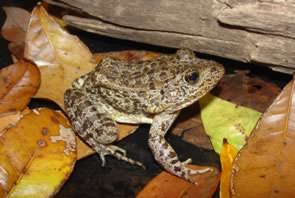
Rana capito
Photo by Aubrey M. Heupel
Description: A somewhat atypical “true” frog, the Carolina gopher frog resembles a toad in many aspects, including its warty skin, large head and chunky body. It has prominent, cobblestone-like warts and distinct folds along the sides of its body. Color ranges from pale gray or tan to nearly black with numerous dark spots. Its belly is mottled with dark pigment, and it has yellow or orange on the concealed surfaces of the thighs and groin.
Habitats and Habits: These rare frogs occur at scattered localities in the Sandhills and southeastern Coastal Plain. Little is known about their natural history outside the breeding season. Adults are secretive, spending most of their lives underground.
Gopher frogs derive their common name from the fact that adults commonly use the burrows of the gopher tortoise (Gopherus polyphemus) as hiding places in the Deep South, but in North Carolina (where these tortoises do not occur), gopher frogs hide in stump holes, root tunnels and mammal and crayfish burrows.
Gopher frogs depend on fishless ponds for breeding. Virtually all breeding sites are upland ephemeral ponds in longleaf pine savannas. Large, globular egg masses are attached to submerged stems, usually in water more than a foot deep. The tadpoles very closely resemble those of the southern leopard frog and normally transform in about 12 weeks.
Call: Most breeding takes place from mid-February to mid-April. Their call is a low-pitched snore or growl, sometimes given underwater.
Frog Fact: Carolina gopher frogs have suffered tremendously from habitat loss and alteration. They are considered endangered, threatened or of special concern in all states within their range (Coastal Plain of North Carolina to Alabama).
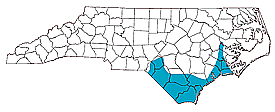
The shaded region represents the range of the Carolina gopher frog in North Carolina.
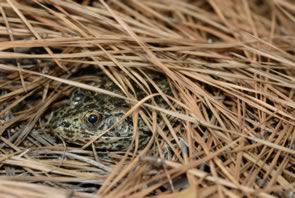
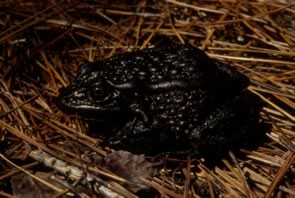
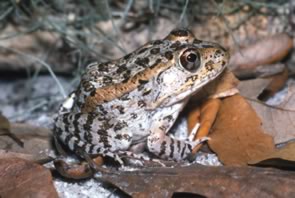
Photo by Tom Luhring
Photo by Jeff Beane
Photo by RW Van Devender
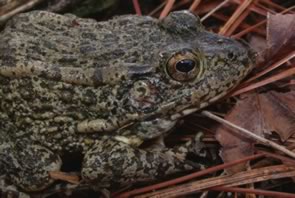
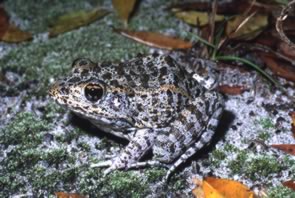
This website created by: Grant Connette and Evan Eskew.
For comments or questions contact M. Dorcas: midorcas@davidson.edu.
M. Dorcas homepage: http://bio.davidson.edu/dorcas
Davidson College, Davidson, North Carolina 28035-1719.
Text and maps from: Dorcas, M. E., S. J. Price, J. C Beane, and S. S. Cross. 2007. The Frogs and Toads of North Carolina. North Carolina Wildlife Resources Commission, Raleigh, NC. – Copyright by Michael E. Dorcas
Call provided by Walter Knapp.
Partial Funding for this website provided by a Associate Colleges of the South, National Science Foundation, and Duke Energy.
